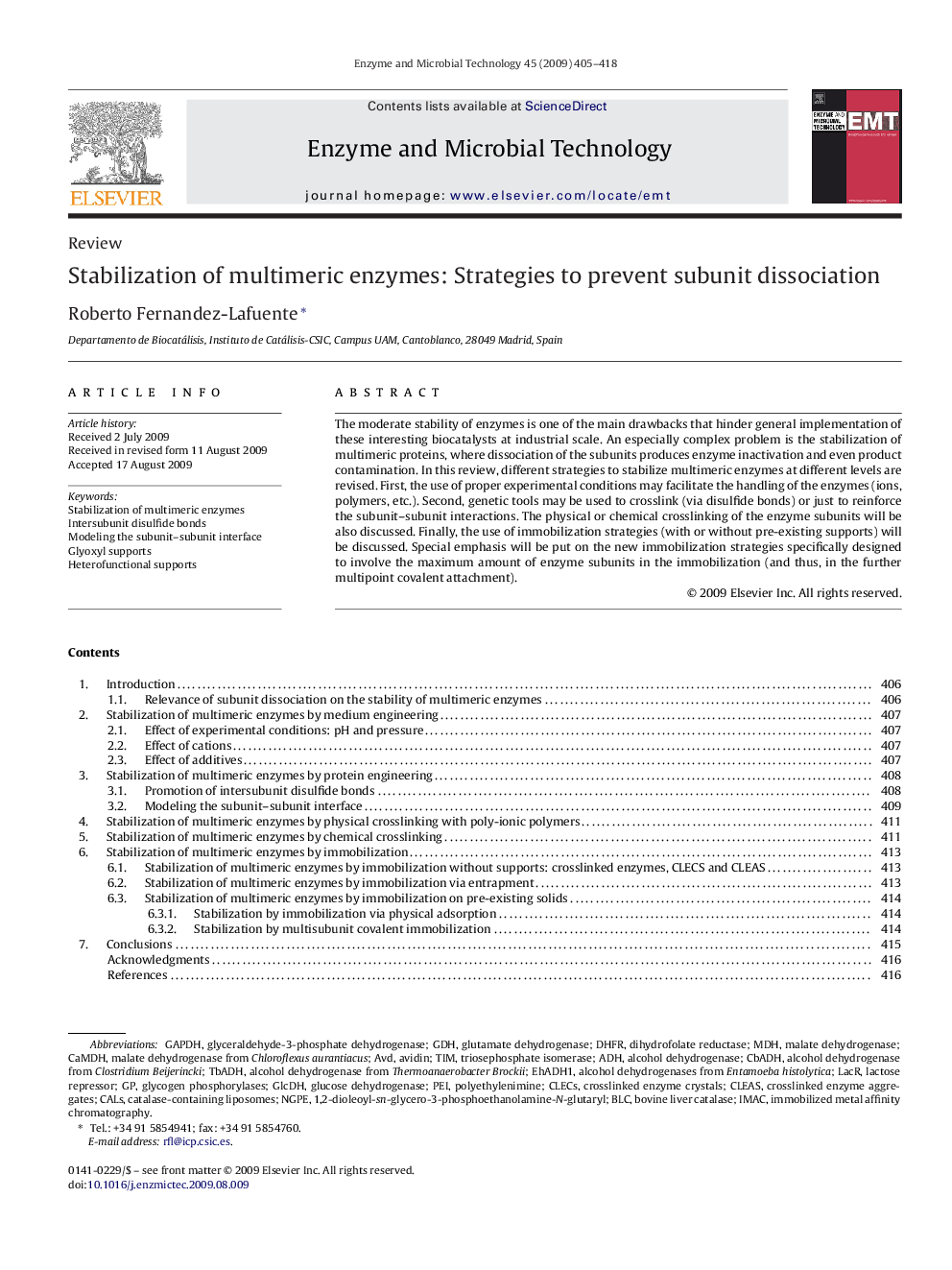| Article ID | Journal | Published Year | Pages | File Type |
|---|---|---|---|---|
| 17415 | Enzyme and Microbial Technology | 2009 | 14 Pages |
The moderate stability of enzymes is one of the main drawbacks that hinder general implementation of these interesting biocatalysts at industrial scale. An especially complex problem is the stabilization of multimeric proteins, where dissociation of the subunits produces enzyme inactivation and even product contamination. In this review, different strategies to stabilize multimeric enzymes at different levels are revised. First, the use of proper experimental conditions may facilitate the handling of the enzymes (ions, polymers, etc.). Second, genetic tools may be used to crosslink (via disulfide bonds) or just to reinforce the subunit–subunit interactions. The physical or chemical crosslinking of the enzyme subunits will be also discussed. Finally, the use of immobilization strategies (with or without pre-existing supports) will be discussed. Special emphasis will be put on the new immobilization strategies specifically designed to involve the maximum amount of enzyme subunits in the immobilization (and thus, in the further multipoint covalent attachment).
